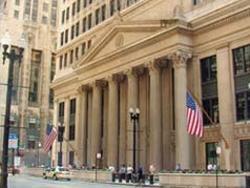Inflation Expected to Continue Falling, But Feds Seek 2% Target
Washington, DC, February 13, 2023-"The end of distressingly high inflation is coming into view,” reports the Wall Street Journal. “Consumer prices gained 6.5% in December, down from June’s 9.1% annual rate, the highest since 1981. There is good reason to think inflation will keep falling, Federal Reserve Chairman Jerome Powell said earlier this month.
“‘The process of getting inflation down has begun,’ Mr. Powell said at the Economic Club of Washington, D.C.
“Even so, inflation is far above the Fed’s 2% target. Even excluding the volatile food and energy categories, core inflation was 5.7% in December. So how does it fall all the way back to 2%?
“Markets seem optimistic it will do so of its own accord, and are betting the Fed will therefore cut rates this year. Mr. Powell disagrees.
“Who is right depends on three sectors: goods, shelter, and other services, excluding food and energy. They face different forces reflecting the mechanics of how inflation is measured, and the macroeconomic backdrop. A recession would tamp down price gains, while accelerating growth would keep them high.
Goods Deflation
“Surging prices for manufactured goods such as autos and furniture drove much of the initial inflation burst in 2021 as consumer spending, fueled by low interest rates, government stimulus and pandemic habit shifts, collided with blocked-up supply chains. Prices for core goods rose 12.3% from a year earlier in February 2022, and rose just 2.1% from a year earlier in December 2022. These goods represent about 22% of the CPI and 23% of the price index of personal-consumption expenditures, which the Fed prefers.
“That surge is over. Supply chains have mostly healed. Consumer demand has shifted back toward services from goods. Core goods prices were up just 2.1% in the year through December, contributing 0.5 percentage points to the CPI’s 6.5% increase-down from February 2022, when they drove 2.5 percentage points of that month’s 7.9% increase. For the three months ended December, core goods prices actually fell at an annualized 4.8% rate.
“Lower spending on goods, ongoing improvement in supply chains and falling shipping costs should continue to ease price pressures in coming months, said Blerina Uruci, chief U.S. economist at T. Rowe Price.
Rent Deflation: Wait For It
“Soaring demand for houses and apartments from low interest rates and remote working caused shelter to contribute more than half of December’s 5.7% core CPI inflation. But as Mr. Powell put it, disinflation in housing “is in the pipeline.”
“Economists agree: they expect this category to continue rising through the spring, but then to decelerate. Jake Oubina, senior economist at Piper Sandler, forecasts shelter inflation will fall from 8.1% in March to 5.3% by December.
Core Services
“Once food, energy, goods and shelter are excluded, what remains are core service prices excluding shelter-what some economists call “supercore” inflation.
“It is still running at around 4%, Mr. Powell said. Until it drops, ‘we see ourselves as having a lot of work left to do.’”
